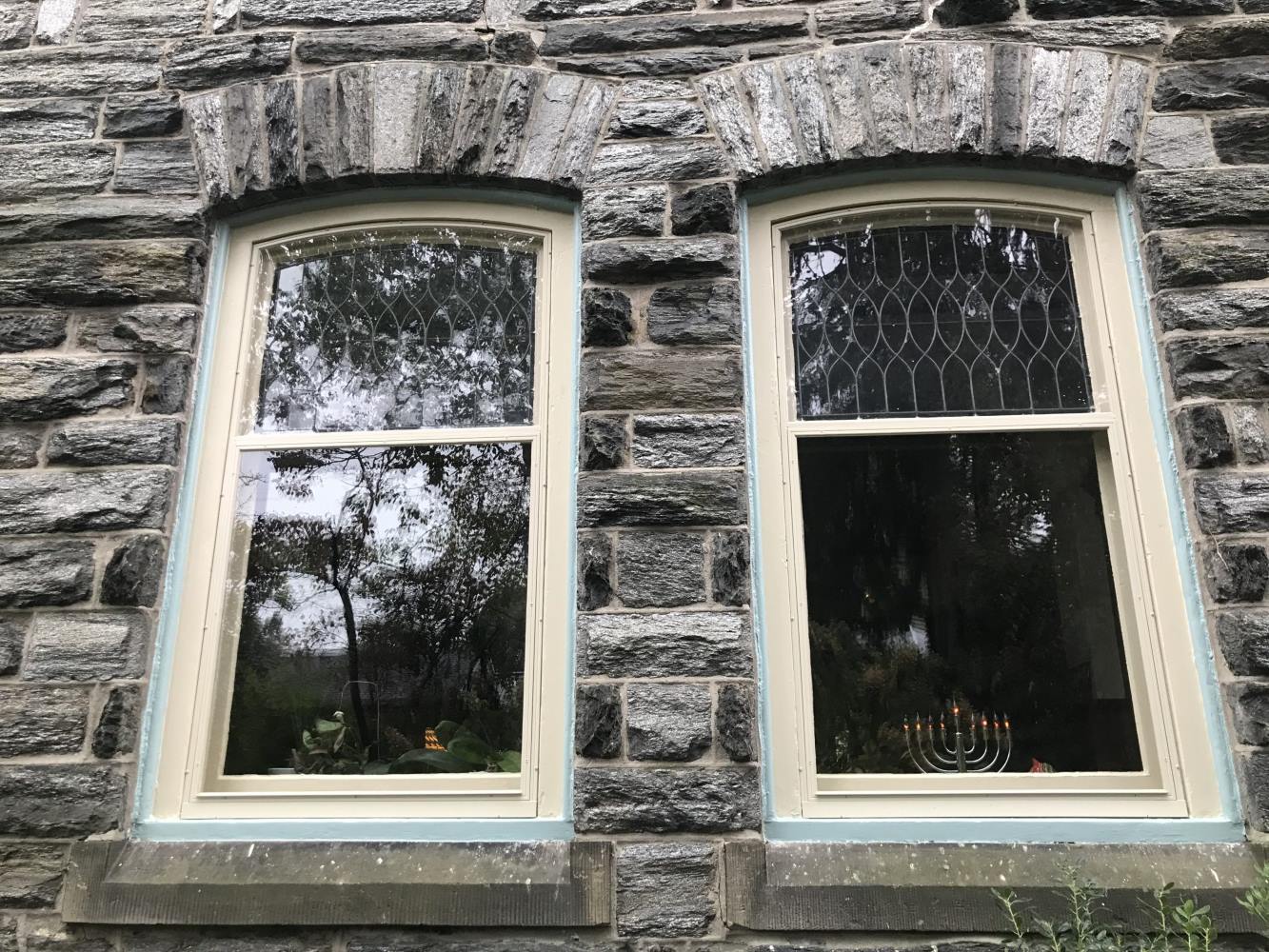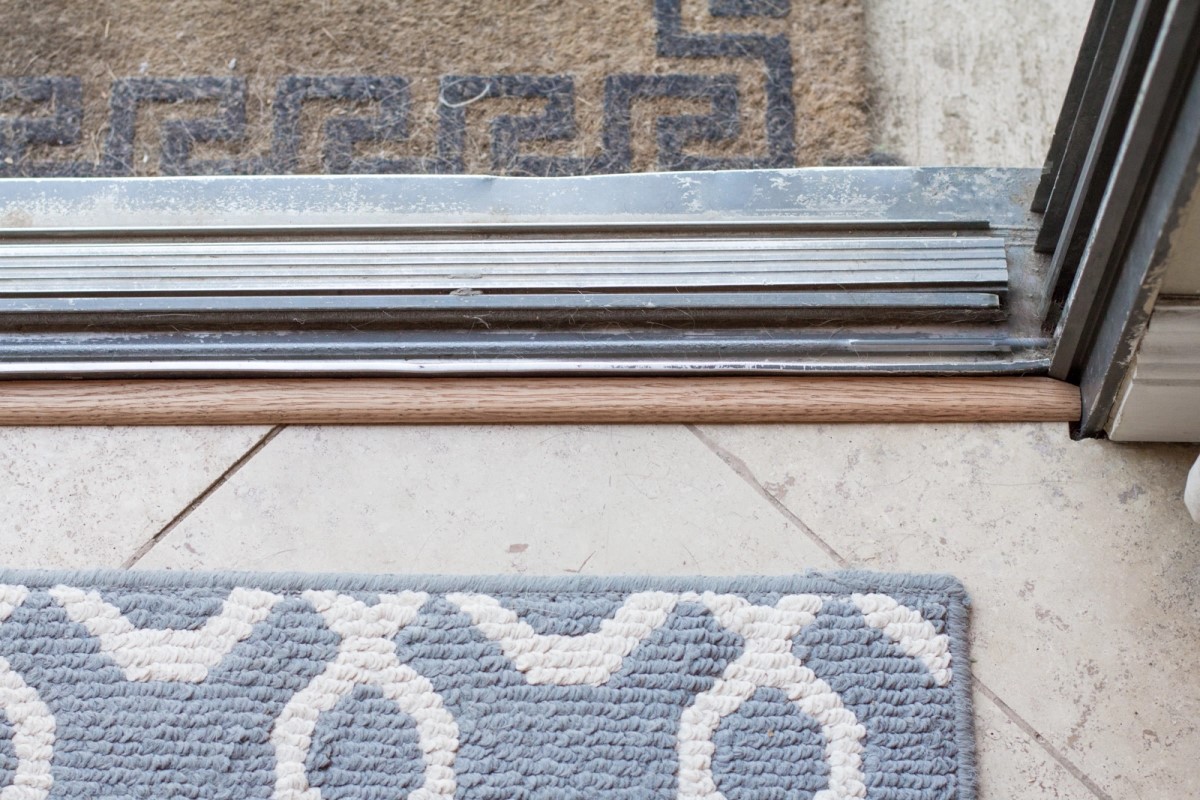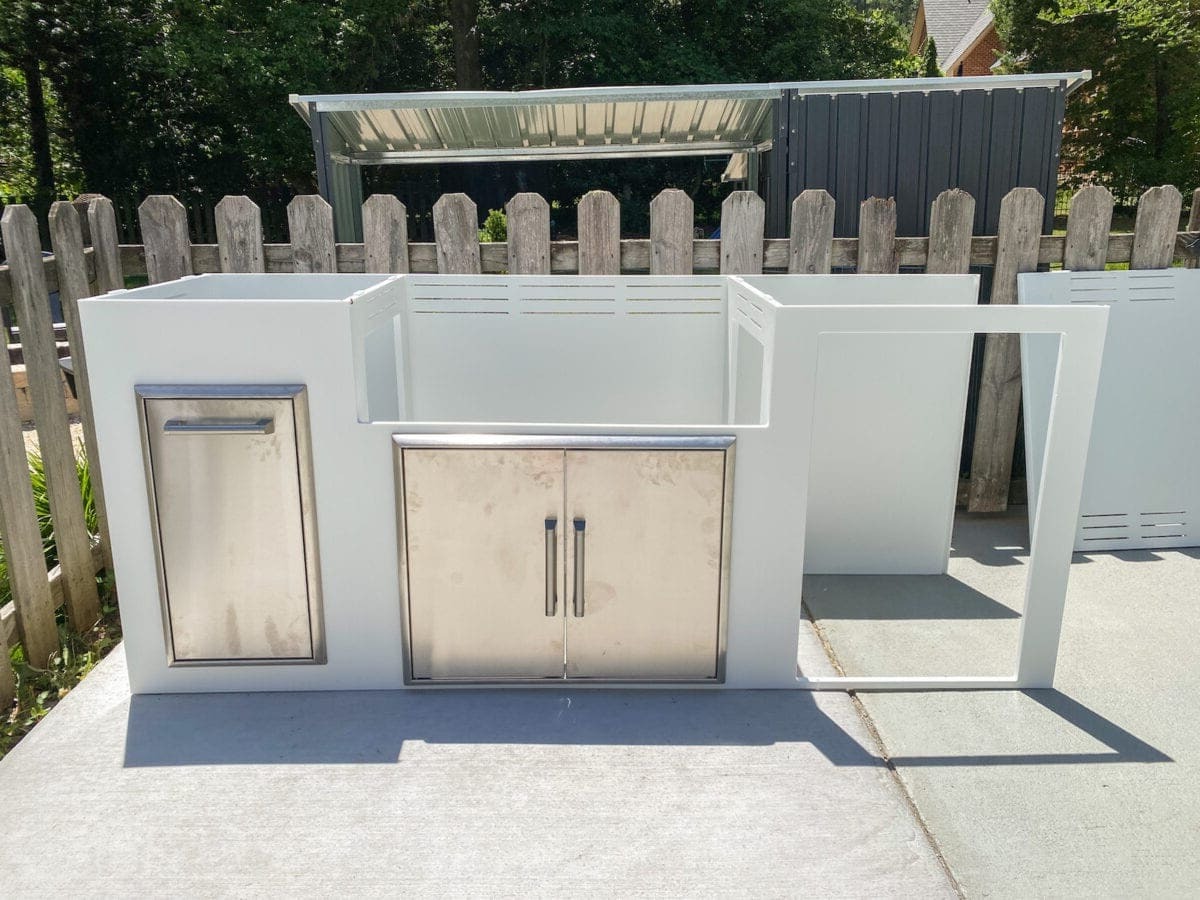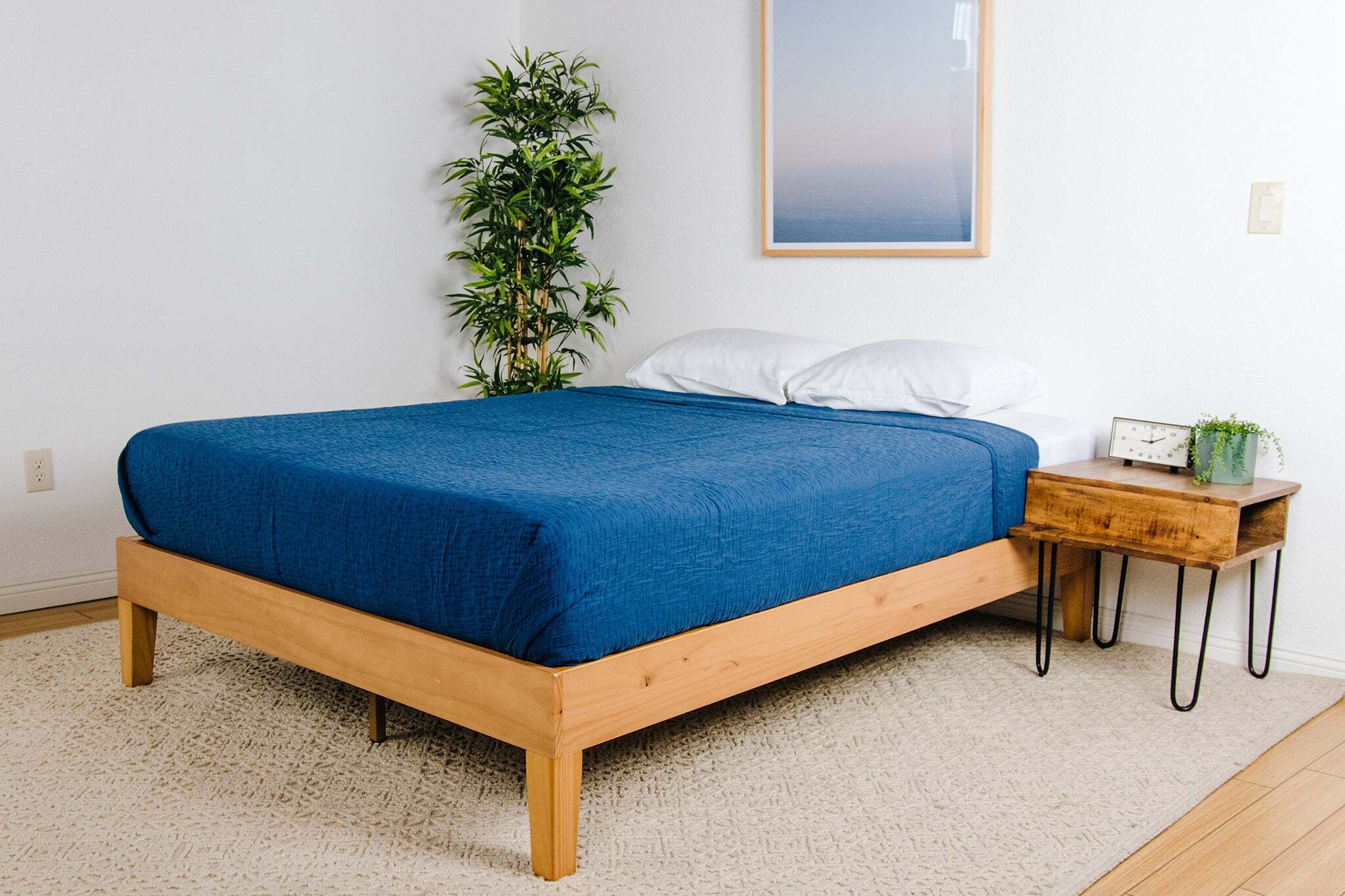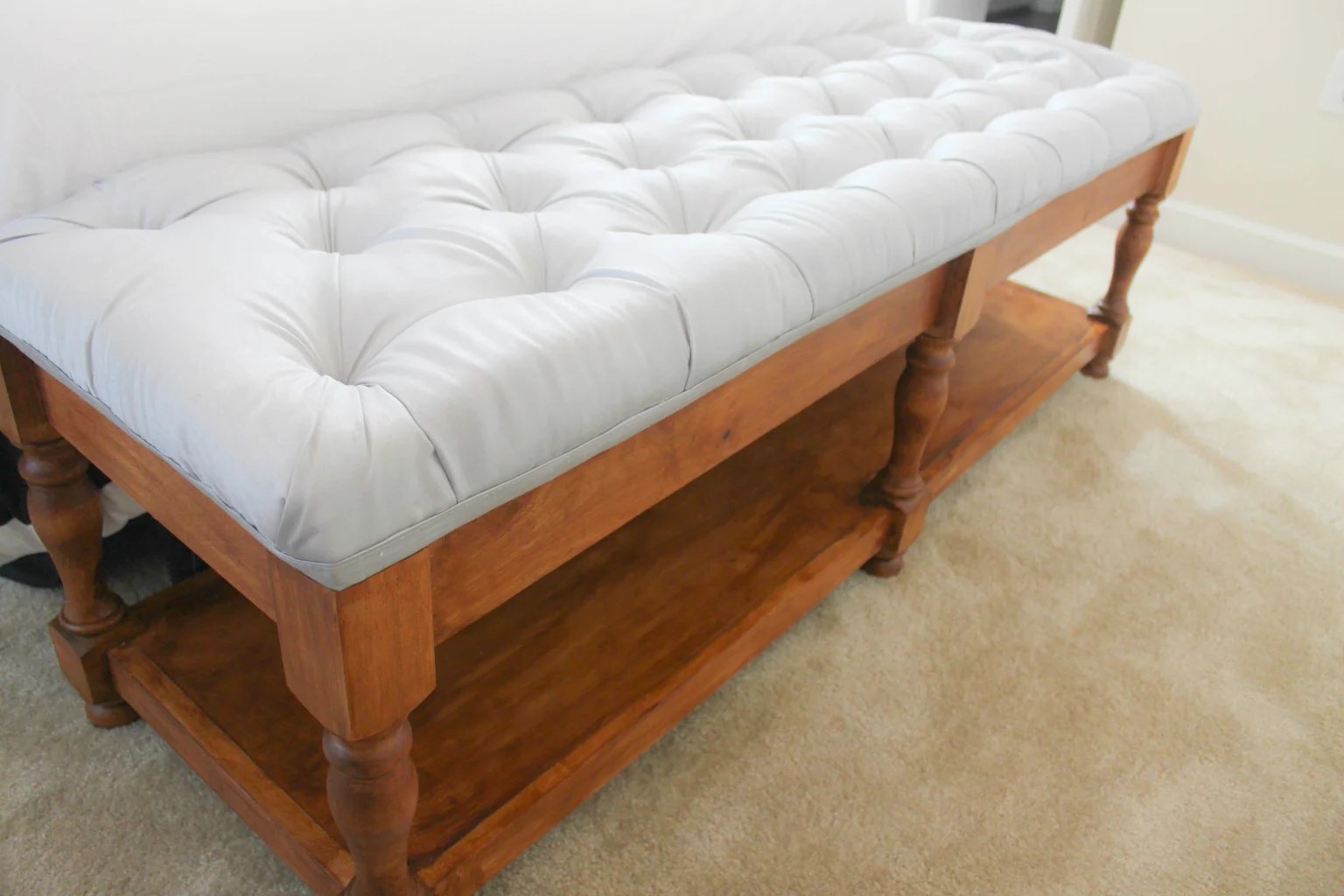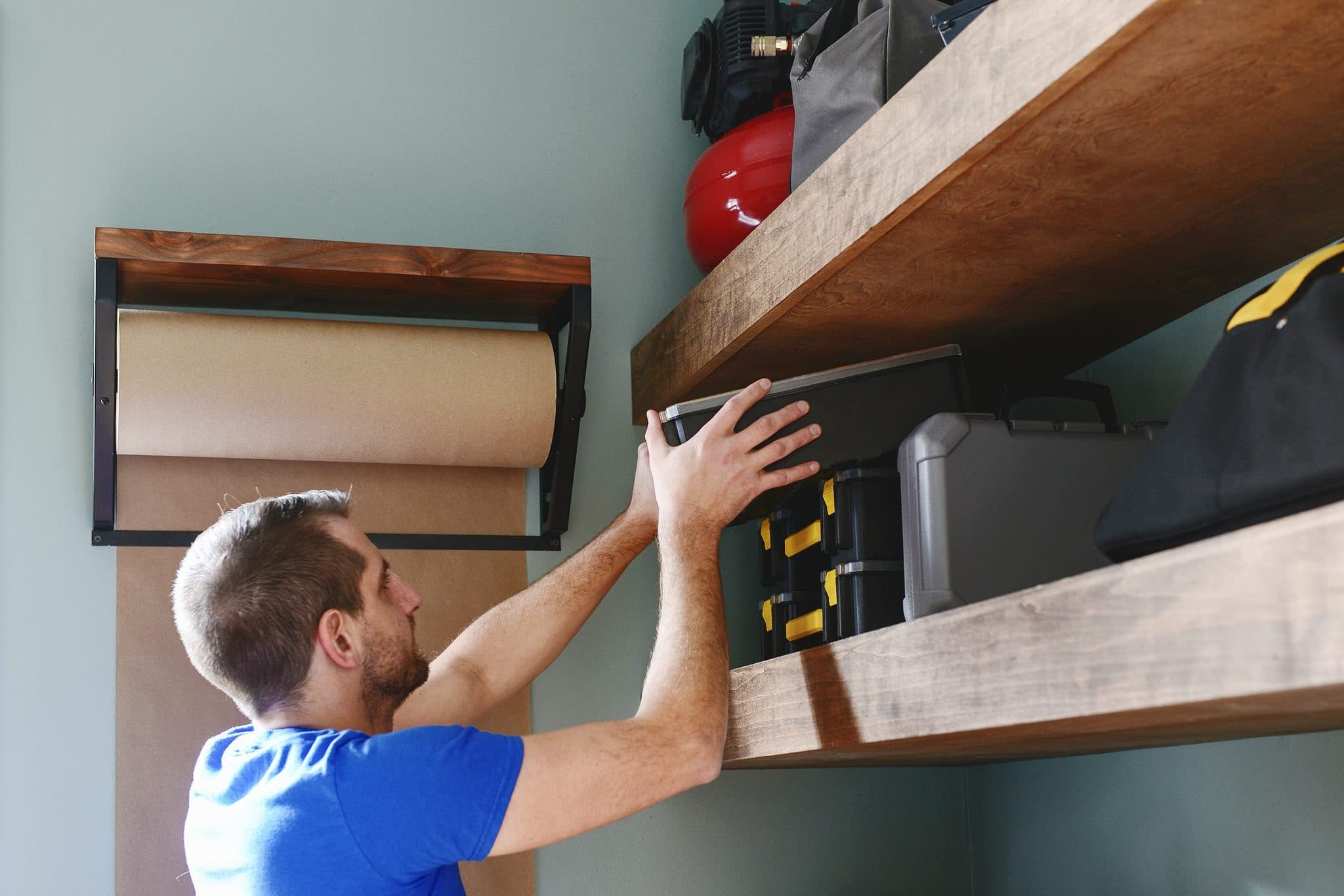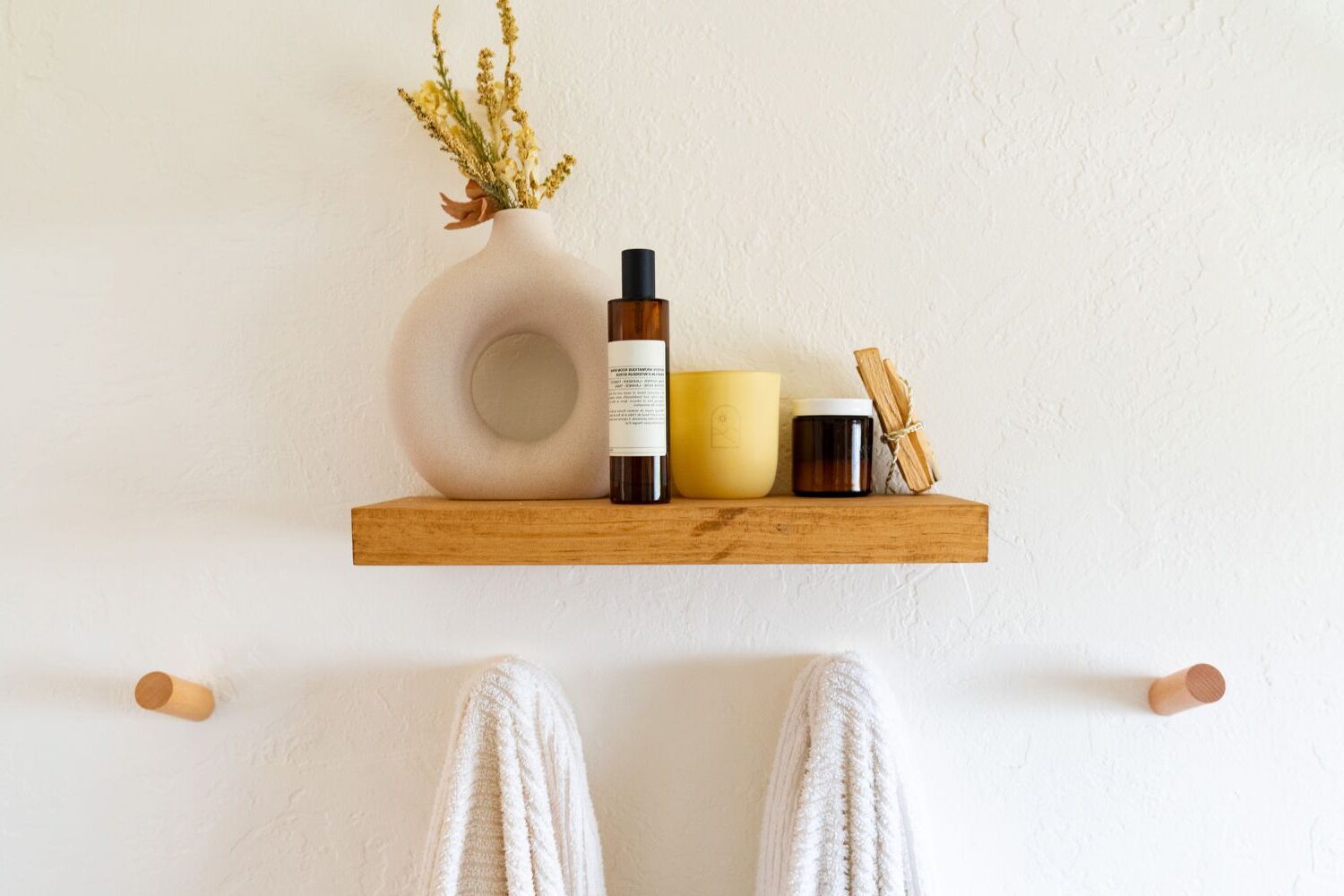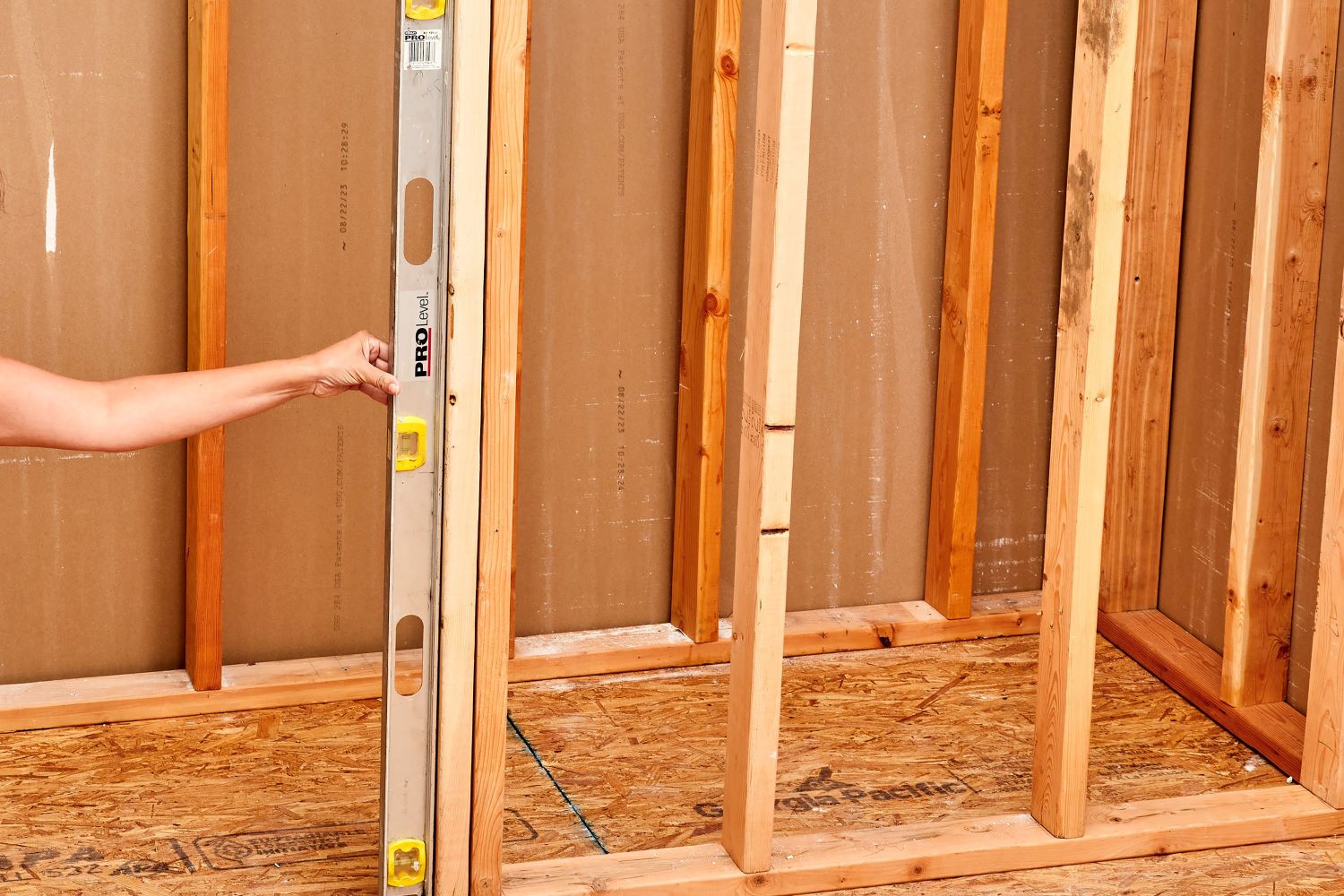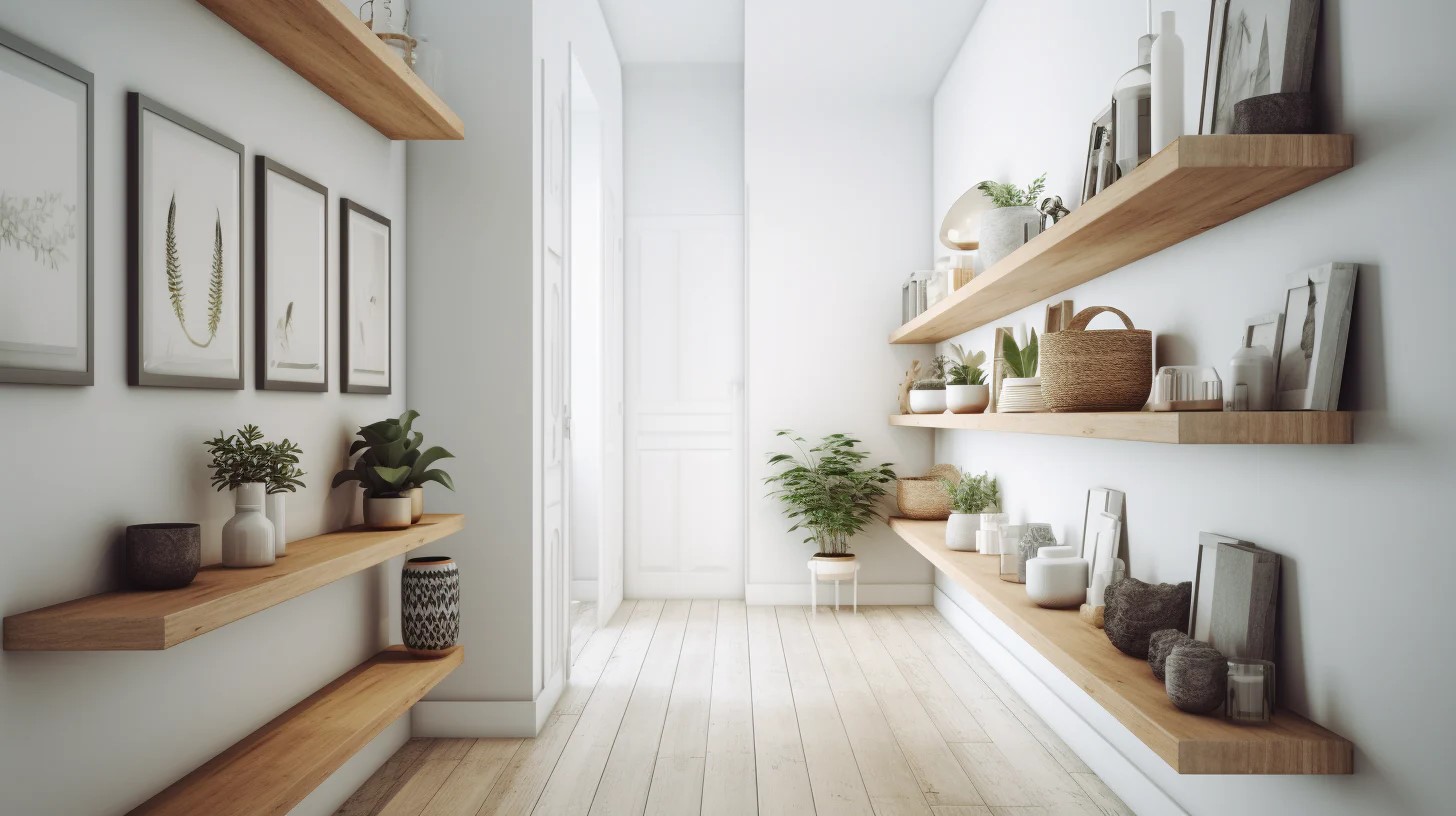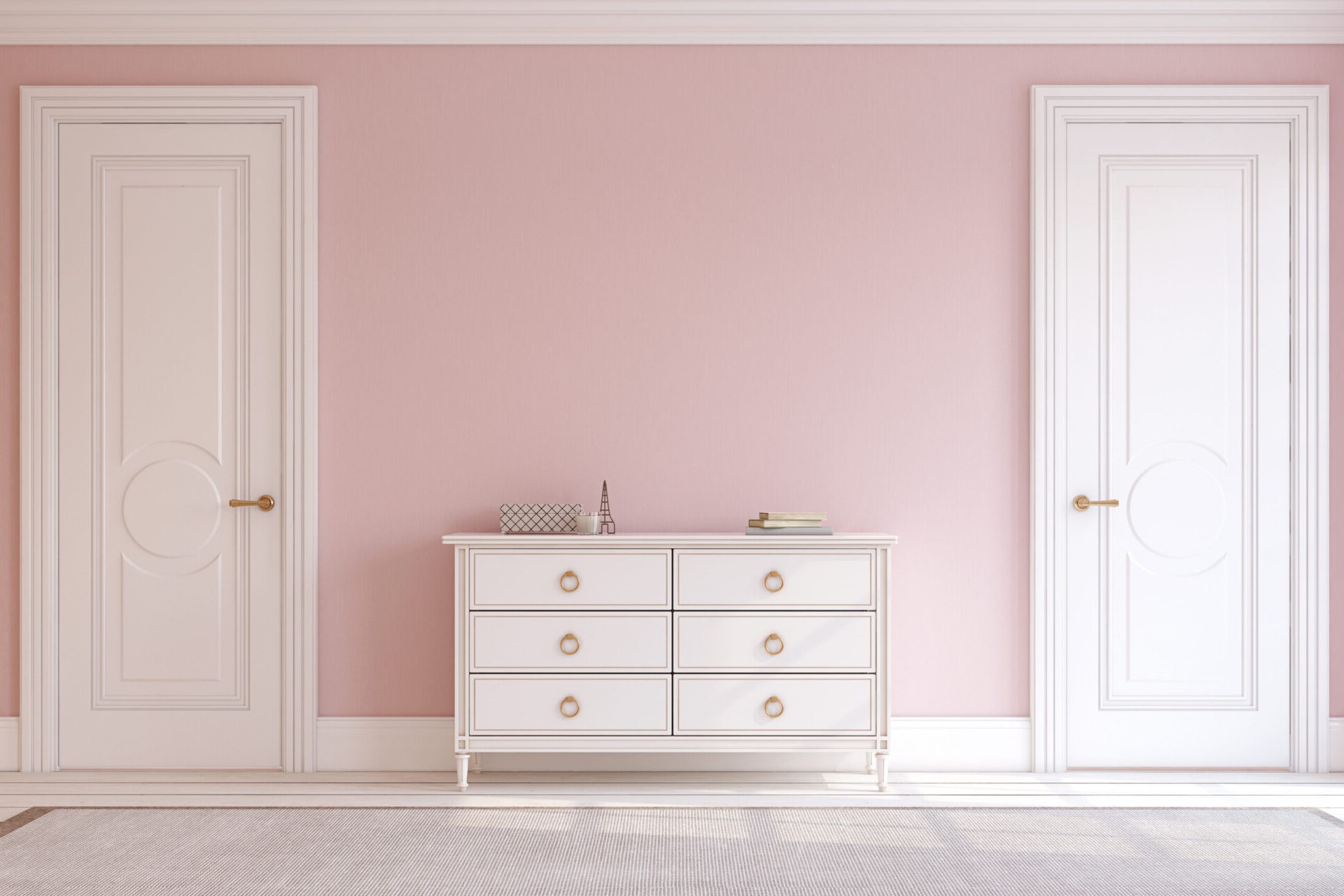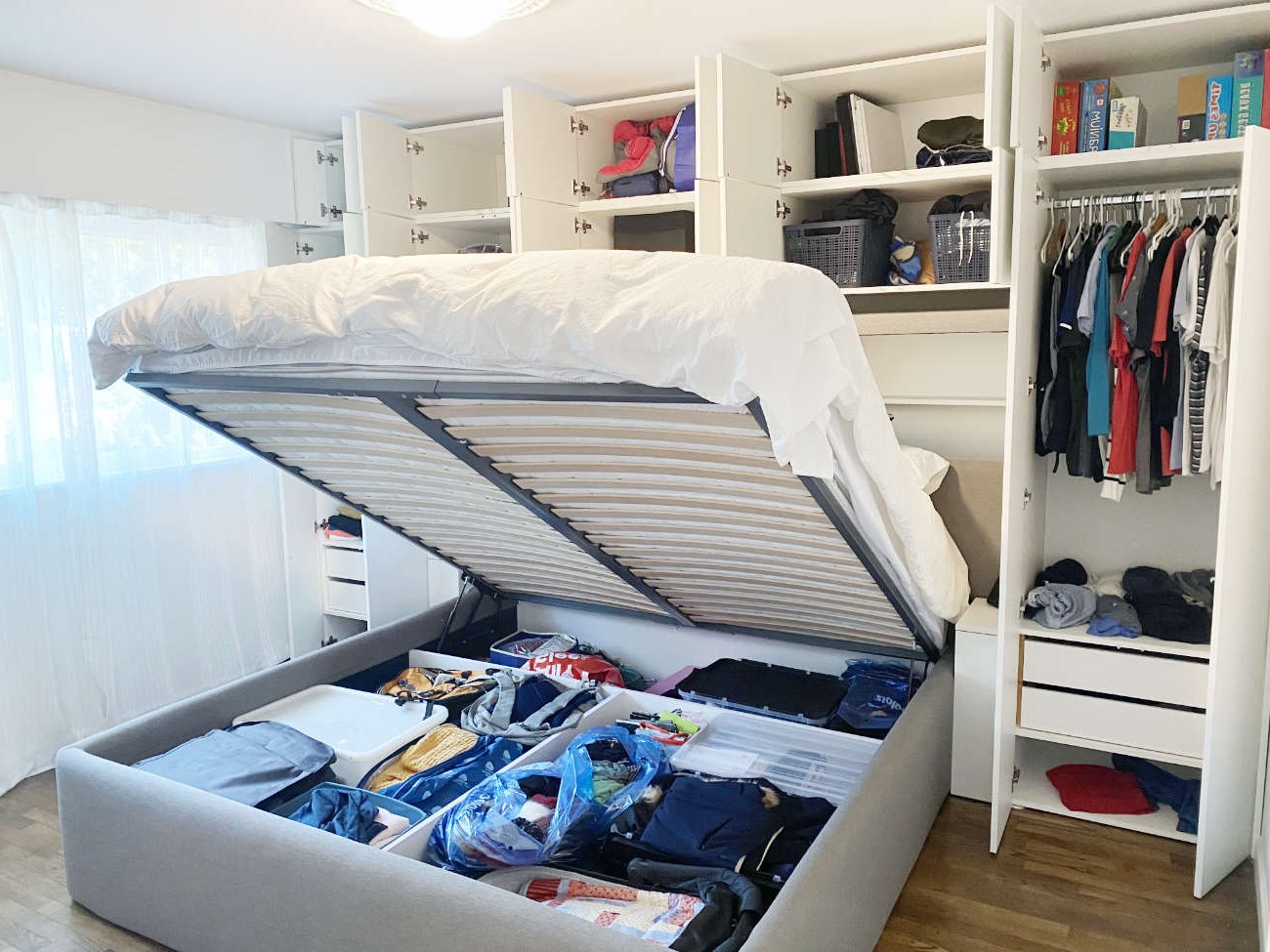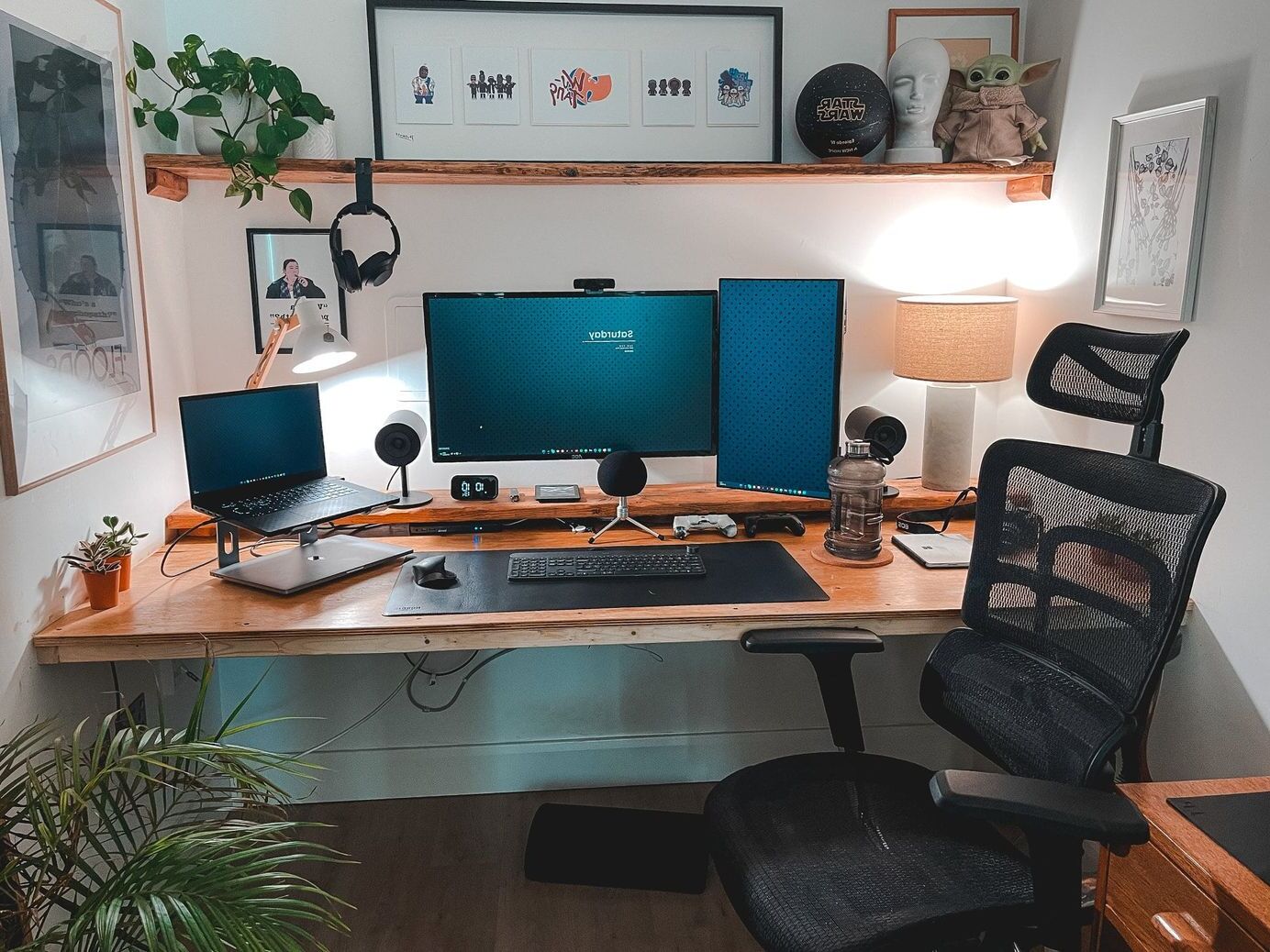Home>Create & Decorate>DIY & Crafts>DIY Floating Bed Frame: Step-by-Step Guide
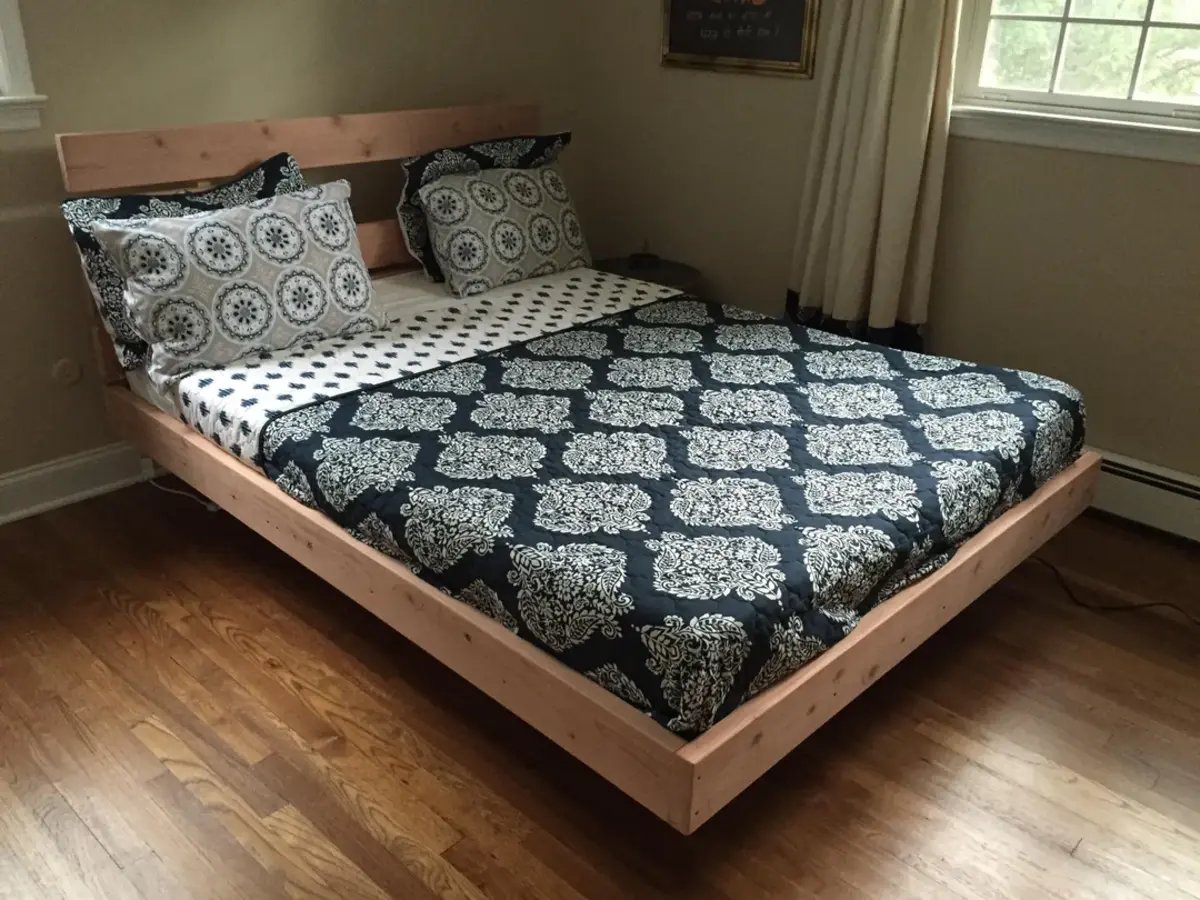

DIY & Crafts
DIY Floating Bed Frame: Step-by-Step Guide
Modified: May 30, 2024

Senior Editor in Create & Decorate, Kathryn combines traditional craftsmanship with contemporary trends. Her background in textile design and commitment to sustainable crafts inspire both content and community.
Learn how to build a DIY floating bed frame with our step-by-step guide. Perfect for DIY & Crafts enthusiasts looking for a unique project.
(Many of the links in this article redirect to a specific reviewed product. Your purchase of these products through affiliate links helps to generate commission for Twigandthistle.com, at no extra cost. Learn more)
Introduction
Are you looking to add a touch of modern elegance to your bedroom? A DIY floating bed frame might just be the perfect project for you. Not only does it create a stunning visual effect, but it also maximizes the sense of space in the room. Imagine a bed that appears to be effortlessly suspended in mid-air, adding a unique and stylish element to your bedroom decor.
Building a floating bed frame may seem like a complex task, but with the right guidance and a bit of DIY spirit, it can be a rewarding and achievable project. This step-by-step guide will walk you through the process, from gathering the necessary materials and tools to assembling the frame and adding the finishing touches.
By the end of this guide, you'll have not only a beautiful and functional piece of furniture but also the satisfaction of having created it with your own hands. So, roll up your sleeves, gather your tools, and let's embark on this exciting DIY adventure to create a stunning floating bed frame.
Read more: DIY Storage Bed Frame
Materials and Tools
Before diving into the construction of your DIY floating bed frame, it's essential to gather all the necessary materials and tools. Here's a comprehensive list to ensure you have everything you need to complete this project successfully:
Materials:
- Lumber: Select high-quality lumber for the frame, ensuring it is sturdy and capable of supporting the weight of the mattress and occupants. The specific dimensions will depend on the size of your bed, but typically, you'll need boards for the frame, headboard, and footboard.
- Plywood: Choose plywood to create the base of the bed frame. This will provide a solid foundation for the mattress and ensure stability.
- Wood Screws: Invest in a variety of wood screws in different lengths to secure the frame and other components together effectively.
- Wood Glue: Opt for a strong wood glue to reinforce the joints and enhance the overall stability of the frame.
- Floating Mechanism: Depending on the design you choose, you'll need a reliable floating mechanism to create the illusion of a suspended bed. This may include brackets, cables, or other hardware.
- Bed Slats: Acquire bed slats to support the mattress and ensure proper weight distribution.
Tools:
- Measuring Tape: A precise measuring tape is crucial for accurately determining the dimensions of the frame and ensuring a perfect fit.
- Circular Saw or Miter Saw: A saw will be necessary for cutting the lumber and plywood to the required lengths.
- Drill and Bits: A power drill with a set of drill bits is essential for creating pilot holes and driving screws into the wood.
- Screwdriver: Both manual and electric screwdrivers will be handy for assembling the frame and attaching components.
- Clamps: Clamps are useful for holding pieces together securely while the glue dries and when assembling the frame.
- Sandpaper: Smooth out rough edges and surfaces of the wood using sandpaper to achieve a professional finish.
- Level: To ensure the bed frame is perfectly horizontal and aligned during assembly, a level will be indispensable.
By ensuring you have all the required materials and tools at the outset, you'll be well-prepared to tackle each step of the construction process with confidence and efficiency. Now that you've gathered everything you need, it's time to move on to the exciting phase of measuring and cutting the wood for your floating bed frame.
Step 1: Measure and Cut the Wood
The initial step in constructing your DIY floating bed frame involves precise measurements and accurate cuts of the wood components. This phase is crucial as it sets the foundation for the entire project, ensuring that the frame is structurally sound and visually appealing.
Begin by measuring and marking the lumber according to the specific dimensions of your bed frame. Use a measuring tape to determine the lengths required for the frame, headboard, footboard, and other essential parts. It's essential to double-check the measurements to avoid any errors that could affect the overall stability and aesthetics of the bed frame.
Once the measurements are confirmed, carefully use a circular saw or miter saw to make the necessary cuts. Ensure that the cuts are clean and precise, as they will directly impact the assembly and overall appearance of the frame. Take your time to maintain accuracy, and if possible, use a cutting guide to guarantee straight and uniform cuts across the lumber.
In addition to the primary frame components, you'll also need to cut the plywood to create the base of the bed frame. The plywood should align perfectly with the dimensions of the frame to provide a solid and even surface for the mattress. Again, accuracy is key during this stage to ensure a seamless fit and optimal support for the mattress.
As you complete the cutting process, it's advisable to label each piece of wood to correspond with its intended position in the frame. This simple step will streamline the assembly process and prevent any confusion later on. Additionally, sand the cut edges and surfaces of the wood to remove any roughness and create a smooth finish, enhancing the overall quality of the frame.
By meticulously measuring and cutting the wood components, you are laying the groundwork for a well-constructed and visually striking floating bed frame. With this crucial step completed, you are now ready to move on to the exciting phase of assembling the frame, bringing your vision of a floating bed one step closer to reality.
Step 2: Assemble the Frame
With the wood components precisely measured and cut, it's time to embark on the exciting phase of assembling the frame for your DIY floating bed. This step requires careful attention to detail and a methodical approach to ensure that the frame is sturdy, well-aligned, and capable of supporting the weight of the mattress and occupants.
Begin by laying out the lumber and plywood pieces in the designated assembly area, ensuring that all the necessary components are easily accessible. Refer to the labeled pieces to identify their respective positions in the frame, facilitating a smooth and organized assembly process.
Using wood glue and the appropriate screws, start joining the frame components together according to the predetermined design. It's advisable to pre-drill pilot holes to prevent the wood from splitting and to facilitate the insertion of screws, resulting in stronger and more secure joints. As you progress, periodically check the alignment and squareness of the frame to maintain its structural integrity.
Once the primary frame structure is assembled, it's time to attach the headboard and footboard, if included in your design. These components not only contribute to the aesthetic appeal of the bed but also provide additional support and stability. Secure them to the frame using the same meticulous approach, ensuring that they are firmly attached and seamlessly integrated into the overall design.
As the frame takes shape, it's essential to periodically assess its stability and make any necessary adjustments to ensure that all the components fit together snugly. Utilize clamps to hold the pieces in place during the assembly process, allowing the wood glue to set and create strong, durable bonds between the joints.
Once the frame is fully assembled, take a moment to admire your progress and ensure that everything is securely in place. This phase marks a significant milestone in the construction of your floating bed frame, bringing you one step closer to the realization of your DIY masterpiece.
With the frame successfully assembled, the next step will involve installing the floating mechanism, which will create the captivating illusion of a suspended bed. This phase will add a touch of ingenuity to your project, elevating the visual impact of the floating bed frame and setting the stage for the final steps in its construction.
Step 3: Install the Floating Mechanism
The installation of the floating mechanism is a pivotal phase in bringing the captivating illusion of a suspended bed to life. This ingenious component not only adds a touch of modern sophistication to the bed frame but also contributes to the overall visual impact of the bedroom decor. As you embark on this step, prepare to infuse your DIY project with a dash of creativity and innovation.
Depending on the specific design of your floating bed frame, the floating mechanism may encompass a variety of elements, such as brackets, cables, or other hardware. It's essential to carefully follow the instructions provided with the chosen mechanism, ensuring that each component is installed securely and functions as intended.
Begin by identifying the optimal placement for the floating mechanism, taking into account the weight distribution and balance of the bed frame. Whether utilizing brackets or cables, precision is key in achieving the desired visual effect. Securely attach the chosen mechanism to the frame, following the manufacturer's guidelines and recommendations for installation.
As the floating mechanism takes shape, take a moment to appreciate the innovative concept that will soon transform your bed into a stunning focal point in the room. The installation process may require attention to detail and patience, but the end result will undoubtedly be worth the effort.
Once the floating mechanism is securely in place, carefully test its functionality to ensure that the bed frame achieves the desired visual effect. This may involve adjusting the tension of cables or fine-tuning the positioning of brackets to achieve the perfect balance and illusion of suspension.
With the floating mechanism successfully installed, step back and admire the remarkable transformation taking place. The bed frame, once a collection of lumber and plywood, now exudes an air of modern elegance, appearing to defy gravity and float effortlessly in the room.
The installation of the floating mechanism marks a significant milestone in the construction of your DIY floating bed frame, bringing you closer to the realization of a truly unique and visually striking piece of furniture. With this phase completed, you are now ready to proceed to the final steps, adding the finishing touches that will elevate your floating bed frame to a new level of sophistication and style.
Step 4: Attach the Bed Slats
With the frame and floating mechanism in place, the next crucial step in constructing your DIY floating bed frame is to attach the bed slats. These slats play a pivotal role in providing essential support for the mattress while ensuring proper weight distribution and overall comfort. As you embark on this step, you are one step closer to completing your vision of a stunning and functional floating bed.
Begin by positioning the bed slats evenly across the plywood base within the frame. The spacing between the slats should be carefully considered to provide optimal support for the mattress, preventing sagging and ensuring a comfortable sleeping surface. Take precise measurements to guarantee uniform spacing, promoting mattress longevity and comfort.
Once the positioning of the bed slats is determined, secure them to the plywood base using screws or appropriate fasteners. It's essential to ensure that the slats are firmly attached to the base, creating a stable foundation for the mattress. Additionally, consider reinforcing the attachment points with wood glue to enhance the overall strength and durability of the slat assembly.
As you progress with attaching the bed slats, periodically assess the alignment and stability of each slat to maintain a consistent and level surface. This meticulous approach will contribute to the longevity of the mattress and optimize the sleeping experience, ensuring that the bed provides reliable support for years to come.
Once all the bed slats are securely in place, take a moment to appreciate the progress made in transforming a collection of raw materials into a functional and visually striking piece of furniture. The addition of the bed slats not only enhances the structural integrity of the floating bed frame but also brings you closer to the realization of a comfortable and inviting sleeping space.
With the bed slats successfully attached, your DIY floating bed frame is now nearing completion. The final step involves adding the finishing touches that will elevate the aesthetic appeal of the bed frame, culminating in the creation of a truly remarkable and personalized piece of furniture.
Step 5: Finishing Touches
With the structural elements of the DIY floating bed frame in place, it's time to focus on the finishing touches that will elevate the overall aesthetic appeal and ensure a polished, professional look. This phase allows you to infuse your personal style and creativity into the project, transforming the bed frame into a stunning centerpiece for your bedroom.
Begin by carefully inspecting the entire frame, ensuring that all joints are secure, and the surfaces are smooth and free of any imperfections. Use sandpaper to gently smooth out any rough edges or uneven surfaces, creating a seamless and professional finish. Pay close attention to detail, as the quality of the finishing will significantly impact the visual appeal of the bed frame.
Next, consider applying a finish or stain to the wood to enhance its natural beauty and protect it from wear and tear. Whether you prefer a rich, dark stain to add a touch of elegance or a clear finish to highlight the wood's natural grain, the choice is yours. Apply the finish evenly, following the manufacturer's instructions, and allow ample time for it to dry and cure, ensuring a durable and lustrous surface.
As the finish dries, take the opportunity to add any additional decorative elements that complement your bedroom decor. Whether it's intricate carvings, decorative moldings, or personalized engravings, these embellishments can add a touch of individuality and charm to the bed frame, making it a true reflection of your style and personality.
Consider incorporating built-in lighting to create a captivating ambiance around the bed. LED strip lights or recessed lighting can be discreetly installed within the frame, casting a soft, inviting glow that enhances the floating illusion and adds a touch of modern sophistication to the bedroom.
Finally, dress the bed with luxurious bedding, decorative pillows, and a cozy throw to complete the look. The bedding you choose can further enhance the visual impact of the floating bed frame, creating a harmonious and inviting sleeping space that exudes comfort and style.
With the finishing touches complete, step back and admire the transformation that has taken place. What was once a collection of lumber and plywood has now been transformed into a breathtaking and personalized floating bed frame, adding a touch of modern elegance to your bedroom. Your attention to detail and creativity have culminated in the creation of a truly remarkable piece of furniture that will be the envy of all who see it.
Conclusion
In conclusion, the journey of constructing a DIY floating bed frame has been a rewarding and transformative experience. From the initial stages of measuring and cutting the wood to the installation of the floating mechanism and the addition of finishing touches, each step has contributed to the creation of a stunning and functional piece of furniture.
As the final touches are completed, the floating bed frame stands as a testament to creativity, craftsmanship, and the fulfillment of a vision. The seamless integration of wood, precision engineering, and personal flair has resulted in a captivating centerpiece for the bedroom, elevating the overall aesthetic and creating a sense of modern elegance.
The DIY spirit that has driven this project embodies the essence of self-expression and ingenuity. By embarking on this endeavor, you have not only crafted a unique and visually striking bed frame but have also infused it with your individual style and personality. The finishing touches, from the choice of finish to the incorporation of decorative elements, have transformed the frame into a personalized work of art.
As you stand back and admire the completed floating bed frame, take pride in the accomplishment and the journey that has led to this moment. The attention to detail, the precision in assembly, and the infusion of creativity have culminated in the creation of a truly remarkable piece of furniture.
This floating bed frame is more than just a functional piece; it is a reflection of your dedication, resourcefulness, and the ability to turn a vision into reality. It serves as a constant reminder of the potential for innovation and the satisfaction that comes from crafting something with your own hands.
As you prepare to enjoy the comfort and visual allure of the floating bed, take a moment to appreciate the craftsmanship and creativity that have gone into its construction. The journey from a simple collection of materials to a captivating floating bed frame is a testament to the power of DIY spirit and the ability to transform ordinary elements into extraordinary creations.

